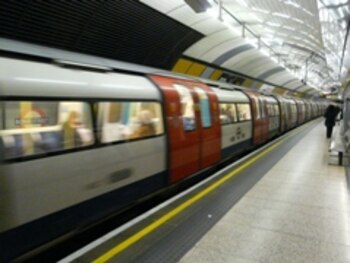
(ATR) A key Underground line for London is number one in the Around the Rings Golden 25 for 2012. The Jubilee Line is emblematic of the importance of public transit for the success of the London Olympics inseven months.
Every major Olympic venue in the city is served by public transit.In most cases it is the only way to reach the event.
Transport for London, the agency responsible for Olympic transit, estimates that three million additional passenger journeys a day may take place during the peak of the Games. With trains and buses already packed to capacity at rush hour every day, how the system will carry the extra load is the major question ahead.
Waits of at least 15 minutes to board trains are already forecast for the Games.
The Jubilee Line, opened in 1979 and finished in 1999, covers 36.2 km with 27 stations. It is the only Underground line that connects to every other line. And crucial for the Olympics, the eastern terminus of the Jubilee is at Stratford, steps away from the entrance to Olympic Park.
While the Jubilee Line was in place when London won its bid for the Games in 2005, other parts of the city’s 100-year-old-plus transit infrastructure needed upgrading and expansion. An IOC report in 2004 used the term "obsolete" to describe the state of London’s transport system in evaluating the bid for 2012. Since then, about $25 billion has been invested in transport, some for Olympic preparedness, the rest for long-term improvements.
Among the Olympic-related projects is the Javelin, a high speed train that goes from St. Pancras in the center of London to Stratford in less than 10 minutes. The station at Stratford will also bring spectators from Europe, boarding trains in Belgium and France for the quick journey across the channel.
Besides the Tube, London buses will carry spectators, many of them to depart from stations such as Victoria and Tottenham Court Road, where major renovations to the bus bays are underway along with other work.
Olympic Lanes for official Games traffic will be in place but will cover just one percent of the 109-mile Olympic Route Network, mostly aroundvenue clusters at the Olympic Park, Greenwich and Wembley.
London Mayor Boris Johnson has been in the forefront of urging Olympic dignitaries to ride the Tube instead of taking cars. Johnson would also be pleased to see them riding the "Boris bikes" now available for hire across the city.
Johnson has been the biggest booster of London’s ability to move the crowds coming for the Olympics. He has labeled as "gloomadon-poppers" critics who have their doubts about London transport during the Games.
"I genuinely believe that when the Games are under way, we will look back at the anxieties as a kind of Millennium Bug thatnever materialized because most people travelling in most parts of London will not even notice that the route network exists," said Johnson at a conference last month.
Still ahead to settle is whether bus drivers back down from a demand for $800 bonuses for Games-time work. The union for the 28,000 workers won’t rule out a strike to get their demand met.
As important as public transit will be to the success of London 2012, security of the system is as crucial as the smooth-running of trains, escalators, elevators and ticket machines. Security will be essential to keep the crowds under control at stations – and to ward-off a repeat of the horror of July 7, 2005 when London public transport became the devil’s playground for a band of terrorists. Portions of the Underground were shut for weeks after the bomb attacks.
Last year's ranking: none
Click here for more about ATR's Golden 25 and here to view the Golden 25 for past years.
Written byEd Hula.
20 Years at #1: Your best source of news about the Olympics is AroundTheRings.com, for subscribers only.
Últimas Noticias
Sinner-Alcaraz, the duel that came to succeed the three phenomenons
Table tennis: Brazil’s Bruna Costa Alexandre will be Olympic and Paralympic in Paris 2024

Rugby 7s: the best player of 2023 would only play the medal match in Paris

Rhonex Kipruto, owner of the world record for the 10000 meters on the road, was suspended for six years

Katie Ledecky spoke about doping Chinese swimmers: “It’s difficult to go to Paris knowing that we’re going to compete with some of these athletes”




